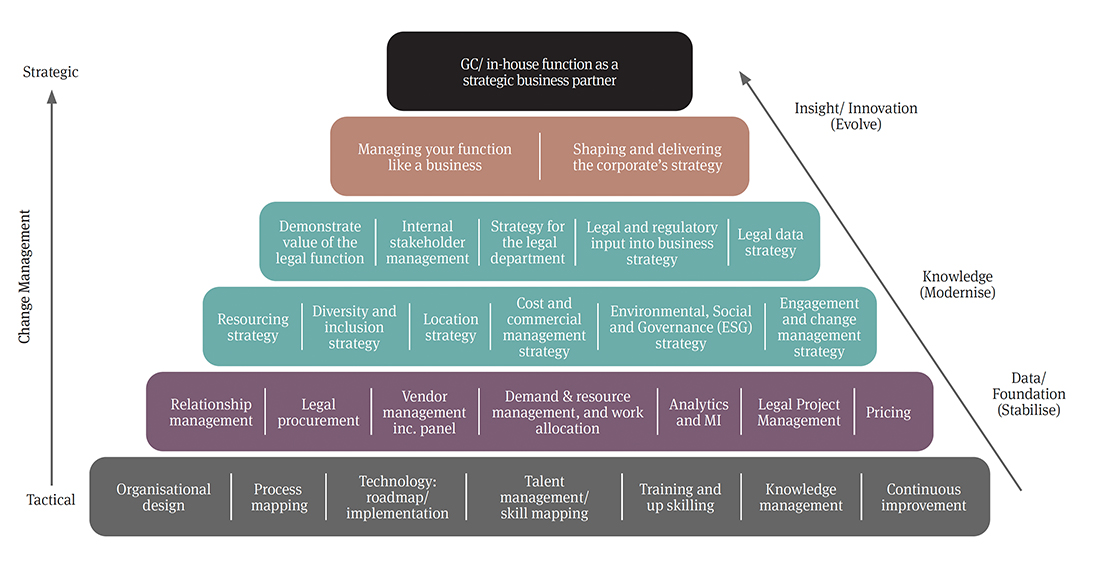The term "Strategic Business Partner" is often used and described in many ways, for example, ‘having a seat at the top table’, ‘acting as an enabler to the business’, ‘running the legal function like a business’ and so on.
None of these definitions are wrong; however, we’d propose there are two key pillars common to all definitions:
- Steering the organisation’s strategy (i.e., providing insights and guidance that influence organisational decision-making, acting not just as a defence player but also as an offensive one, helping the organisation “win”, and achieve its strategic ambitions.)
- Managing the legal function like a business (i.e., offering the maximum value to the organisation at the most effective cost, applying business management principles and financial discipline to a legal department).
However, it is easier said than done. Getting there requires a significant amount of groundwork and strategic planning.
So, what does that consist of? That’s where the Legal Operations Maturity Pyramid comes in. It is a useful model to articulate what needs to be done and identify quickly where you might need to focus your efforts.
The Pyramid

First published in 2019, the Pyramid was developed as part of the launch of Norton Rose Fulbright’s Legal Operations Consulting practice by Stephanie Hamon, a new offering in the market and one of the first dedicated offerings launched by a law firm.
The Pyramid sets out the building blocks for legal to become a strategic partner to the business. Based on Maslow’s hierarchy of needs, it describes the more tactical elements at the bottom, leading to the most strategic at the top. As such, it provides a path for legal functions to sustainably operate at the top as a strategic business partner. To achieve this, two blocks sit almost at the pinnacle of the Pyramid, operating as the two crucial requirements to be considered a strategic business partner; they are the two pillars referenced above: shaping the organisation's strategy and managing your function like a business.
However, much like a house, you can’t put the roof on (or, in this case, the final block) until you have the rest of the infrastructure in place to support it.
This infrastructure consists of three layers that serve different purposes depending on your level of maturity:
- Setting the foundations: Getting the basics in place to allow you to operate consistently as a legal function, such as knowledge management or developing a tech roadmap.
- Adding structure: Formalising the way you carry out your activities, such as allocating matters, engaging law firms, and managing projects, mining data to ensure you have the relevant KPIs available.
- Thinking strategically: Thinking ahead about your overall approach to critical elements of your function, such as how you will structure resourcing, manage costs, and engage with stakeholders as well as the ever-growing role legal plays in D&I or ESG.
In this series, we will examine the different layers of the Pyramid and what you should consider as you work through them from bottom to top.









